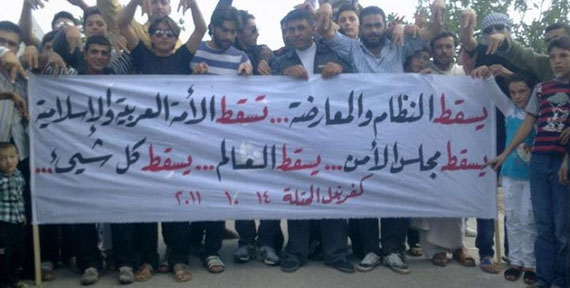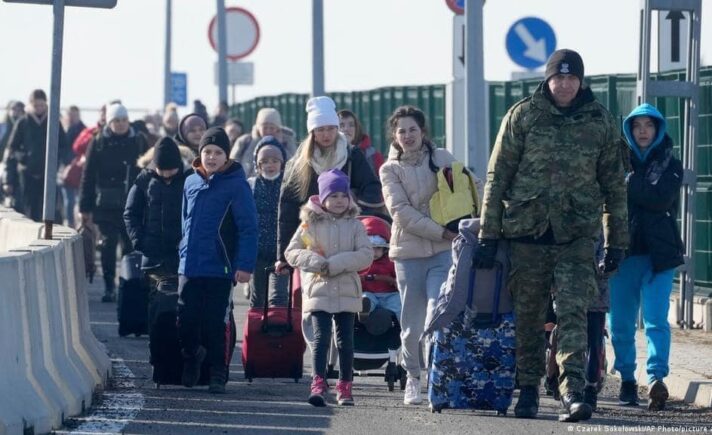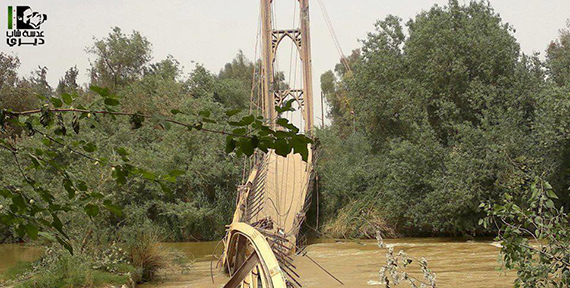An amalgam of unease and dread overwhelm me as I write this piece, especially after a friend warned me that this issue is infinitely thorny and difficult to tackle. I nonetheless maintained the idea of writing and formulating my own perspective. As a young man who lived through years of revolution, I was amongst those who were overly optimistic in the beginning, then grew dismayed and frustrated as they saw the dreams of their generation awash in blood.
How can a revolution, a political act par excellence, produce apolitical or even anti-political activists; ones who are skeptical of politics and politicians? This is probably related to our preconceived notions, and to some unsavory imagery and ideas which we often associate with the word “politics.”
Speaking as a young man who has been active in this revolutionary movement; one who does not renege on his responsibilities, I nonetheless take into account objective circumstances in my critique and analysis of the political attitudes harbored by Syrian revolutionary youths.
The past five years have witnessed the emergence of young Syrian activists, who went on to play an undeniably vital role in the uprising. They generally ranged between 17 and 35 years of age, which resembles the social composition of the Syrian population. In fact, the high proportion of young people in Syrian society was arguably one of the deep-seated roots of the upheaval – as they have been the primary victims of underdevelopment and the rise in the rates of unemployment and poverty.
In this attempt to analyze the narrative, I will chiefly approach the youth of the revolution. Taking into account different political orientations, we could consider them to form a homogenous bloc with a common cause, which is that of the Syrian revolution. Of course, this bloc does not include all Syrians of a certain age group, given the radical disparity between the visions of revolutionary youths and, say, those of Assad loyalists or jihadists.
An aspect of the crisis in the country, since before the “Syrian crisis” became common, is the aspiration of revolutionary youths to be part of a solution. They strived to conceive of a new Syria: a country which accommodates their larger-than-life ambitions, and releases their tremendous energy. Regrettably, their great potential was later transformed into a gunpowder keg, set ablaze with a spark of revolution.
Young people have constituted the pillars of the protest movement since its inception. They took upon themselves the endeavor to breathe the spirit of revolution into the body of Syrian society, amounting to a revolutionary bloc to be reckoned with. It was since the very beginning that this segment of revolutionaries began to venture into significant organizational undertakings, including local media bureaus, relief associations and coordination committees. It was anticipated that these initiatives crystallize into political action that represents their aspirations, but most of them ended in rupture, due to their targeting by the regime or by extremist armed groups. Furthermore, opposition institutions such as the National Council and the National Coalition failed to meet their expectations; a failure which arrived in a context of overall institutional failure to represent different segments of the Syrian revolution.
At that same juncture, emerging political parties also failed to form a framework in which young people could accumulate the expertise earned over years of revolution. These parties also fell short of recognizing that young people will sooner or later form Syria’s new political class, and that new political entities must lay the foundations for them to correct their course, resurface and self-perpetuate.
Attempts to target this group date back to the beginnings of the revolution. The Coordination Committees, which were at the time vanguards of the protest movement, were subject to detention campaigns Assad regime, and subsequent torture and brutalization. The regime sought to provoke the movement into teetering towards militant action, especially after the systemic release of salafist-jihadist leaders from its prisons, knowing all-too-well their animosity towards the emancipatory political vision proposed by the revolutionary youth. Later, regional powers joined in the regime’s war against what Palestinian intellectual Salameh Kaileh described as the “depth of the Syrian revolution,” which has often been associated with young people in the protest movement. Meanwhile, older politicians who belonged to political parties, most of whom former detainees of the regime’s, had the luxury of entirely distancing themselves from the realities of the revolt.
Many non-partisan youths attempted to engage in the world of politics, particularly through local political associations, through which they overcame the hold of traditional politicians over public affairs. Being reactive to a reality rather than genuinely inclined towards political ingenuity, these endeavors were fated to premature demise. On the one hand, youths were in a state of increasing despair as the revolutionary undertaking continued to falter, while a majority of them, on the other hand, had suspended their university education or abandoned their careers, and were utterly uncertain and unable to recover as long as the prospects of the revolution remained blurred, and an imminent fall of the regime remained unlikely.
The educational and career failure, one could argue, was by no means the impetus to attempts at political transformation. This argument may reference the moment when the Syrian revolution broke out, when these very same youth were pursuing their degrees in universities, if we were to assume that political action had never been but a response to such frustrations. To this, I say that frustrations were present, even prevalent, well before the revolution. They were caused by the absence of equal opportunity, and the high rate of unemployment. By 2011, these rates reached unprecedentedly alarming levels, rendering university education all but obsolete for a large segment of young people. These frustrations seem to converge, whether they lead youths to take to the streets and demand change, or to erratic political attempts.
These prematurely failed attempts at exercising politics would later translate into hostility towards traditional politicians, who did not address youth issues, their prior aspirations or their aggravated setbacks after the intractability of the conflict. It is worth noting that this facet of frustration echoes across many countries around the world, including those in Europe. Young people’s engagement in politics due to their inability to pursue higher education is a widespread phenomenon, and is primarily attributed to economic restraints.
As the youths of the revolution could not formulate their political expressions, traditional political forces considered this political vacuum an opportunity to rejuvenate their programs, symbols and discourses. Taking advantage of their relations with regional powers, they posed themselves as representatives of the Syrian revolution. This was manifested by the slogan put forward by the National Council’s campaign: “The National Council represents me.” Driven by the need for a political umbrella to express the demands of the uprising, many were responsive to this campaign. The schism between youths and politicians, however, began to widen. The politicized nationalist, leftist and Islamist youths, who had taken the lead in the uprising in many areas since its early stages, were later marginalized by foreign-sponsored political entities, then by rebel leaders who terminated any serious political engagement inside Syria. Later, the rise of Islamists tore down the ideals of these less politicized youths, who were left in confrontation with traditional and extremist powers without any political and intellectual viability that could embolden them.
The roles of traditional power were inflated due to political capital and funding. The youths were left in the wind, rendered weightless, hopeless and clueless about the transformations that have stricken their lives, or how to politically react to them. No role models were provided by the politicized youth activists who were gradually disappearing ever since. It should be noted that the excessive enthusiasm towards military action, especially among younger age groups (18-25 years), played a major role in the disappearance of those activists and the resultant political recession.
Traditional political forces are often avertant to referencing an “intergenerational conflict,” considering this characterization to be improper, and rather propagated by haste and recklessness associated with young people. They suggest that the two sides should complement each other, regardless of the age gap and the vastly divergent aspirations and objectives. There already exists a heated contest between the two sides, with only few examples of functioning complementation, such as the formation of the National Council, which were rather the exception.
Conversely, the relationship of Islamist militant organizations – Daesh, Al-Nusra, Ahrar al-Sham…etc, with the youth seems more pragmatic. They are fully aware that the vast majority of young people lack any political experience, and hence cannot confront ideological entities which, in turn, claim to have the solutions to their problems; and appeal to their inclinations and aspirations; and provide them with salaries or effective roles within their ranks. This perhaps explains why the overwhelming majority of the fighters of these groups are young people, a substantial number of whom had taken to the streets in 2011 and demanded dignity, social justice, civil and political liberties, equal opportunities and better education.
Traditional political forces notwithstanding, another practical reason exists for the aversion of active youths to political action. It is a question that begs profound answers which address the current implications of a political party, especially for young people.
Political parties in the Western world are in decline, and more horizontal politics, via interaction with civil society, are rising to increasing prominence. Other aspects of this dilemma include the internet and social media, and the information revolution. The majority of young members of Syrian parties in the last century were in pursuit of an environment in which they could formulate their political culture, especially considering that most of those parties were engaged in intellectual or ideological nurturing, either through books, pamphlets or periodicals.
Nowadays, however, the internet provides a wealth of knowledge and connections, whereby any young man can readily contact any writer, download any book, navigate any newspaper or simply access any piece of information with ease. Many young people would naturally dismiss the notion of belonging to political parties, and opt for a more individualistic approach. Why would a young man bother receive training and ideological preparation sessions when he can simply educate himself online?
There is no doubt that political action is not limited to ideological preparation, and that a political party is more than a mere tool for the transfer of knowledge and experience. To this I concede. However, even the expression of political positions, through a sit-in or demonstration, and even mobilizing public opinion, can now be substituted by a hashtag on Twitter, or through en masse changing profile pictures.
Technology has therefore been detrimental to many of functional aspects of political parties, especially as representatives of political trends within society. Questions in this regard cannot be answered in the time being, and we ought to rather wait for political practice to develop, while taking these new variables into consideration.
In conclusion, the aversion by youths to political action should be tackled through focus on three issues: Frustration at the prolonged crisis, the challenge posed by social media, and the lack of political youth role models. While the first and second issues are more pertinent to external factors over which the youths have had little control, the question of role models remains an open domain for them to explore. Those who are aware of their potential roles in the future politics of Syria should not underestimate the influence of role models, and ought to shoulder their responsibilities in setting examples for those in rigorous search for ideals.







